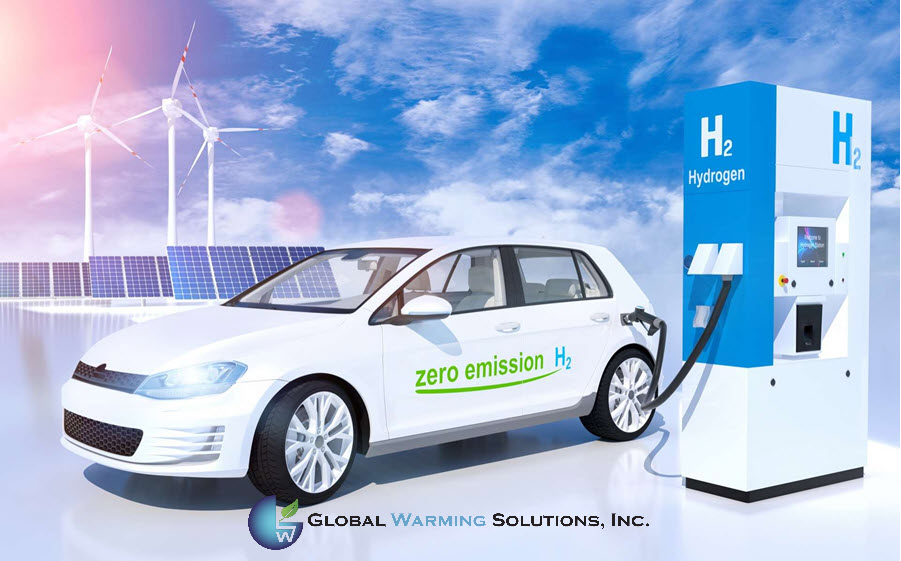
Temecula, CA — Global Warming Solutions, Inc., (OTC MARKETS: “GWSO”), a worldwide developer of technologies that help mitigate Global Warming and its effects on the planet announces that it has achieved DOE hydrogen storage densities in its testing that meet transport safety requirements.
This is ground-breaking because the marketplace has been searching for a material for a hydrogen feeder that will ensure safety in the event of a collision and vehicle damage. Hydrogen technologies have been known for more than two decades already. However, there has always been some obstacle preventing it from becoming a feasible renewable resource of clean energy.
According to the DOE (Department of Energy) and EPA (Environmental Protection Agency), there are many advantages to using Hydrogen energy. It is a renewable energy source in bountiful supply. There are numerous sources to produce Hydrogen locally. It is a uniquely clean and practical energy source which is non-toxic. The use of it greatly reduces pollution. It is far more efficient than other energy sources. Moreover, CNBC published an article on November 1, 2020 stating that “an $11 Trillion global Hydrogen energy boom is coming.”
The company is conducting research and development to create a prototype hydrogen device for vehicles. The US Department of Energy has published very stringent criteria for the suitability of hydrogen storage systems for cars. In accordance with the criteria, the hydrogen content must be at least 63g H2 per liter of volume and at least 66g H2 per 1kg in the hydrogen storage system. Until now, no safe hydrogen storage system for automobiles has achieved these targets, including ultra-high pressure (700 bar) composite cylinders. A liquid hydrogen tank has performance that meets the DOE criteria, but the safety and reliability of such a system makes it unfeasible.
Our research is proving that our system is suitable as a stationary energy storage device in large volumes for supplying residential and commercial buildings, hospitals, airports, civic institutions, etc., with electrical energy. To do this, our hydrogen production system needs to be supplemented with a fuel cell battery, which converts hydrogen energy into electrical energy using atmospheric oxygen. The engineers at GWSO are developing a design that allows, in a split second, to automatically transfer the system from a state of energy storage to a state of energy production and delivery. After the energy reserve is exhausted, the system automatically switches to the state of receiving and storing energy from the network, or from renewable energy sources: wind, solar converters, or wave generators.
Our stationary energy storage system should be particularly attractive to business and industry because it has a phenomenal energy consumption ratio of 8 MJ/kg and is extremely cheap. The key to our technology is sodium, which is 100 times cheaper than lithium. Therefore, our 300-kWh energy storage system will only cost $5,000 to produce. Our system will provide electricity consumers 10kW for 30 hours with a complete disconnection of energy from the network.
“For example, the owner of a private home can store electricity during low-peak periods of the day and supply electricity to the grid during expensive peak times. The difference in the cost of electricity consumed and supplied to the network will provide the system owner with a profitable cash flow. Moreover, our energy storage system is exceptionally durable. Studies of the system’s reliability have shown that after 2000 discharge-charge cycles, the capacity of the system does not decrease. Thus, the owner of the system will be able to operate it for more than 10 years”, said Michael Pollastro, President of GWSO.
To learn more about Global Warming Solutions, Inc. Visit: http://www.gwsogroup.com
Read the most up to date Fuel Cell and Hydrogen Industry news at FuelCellsWorks




